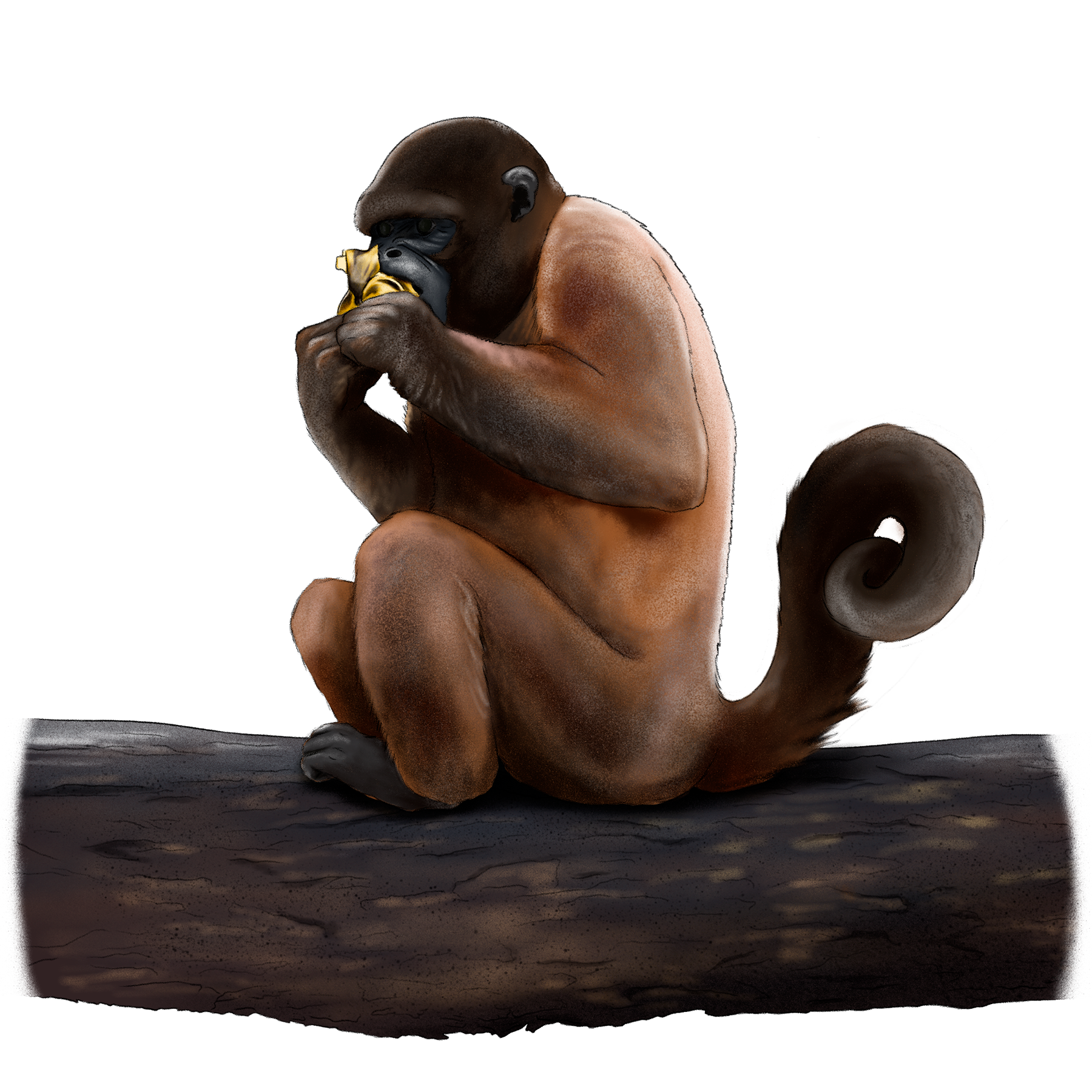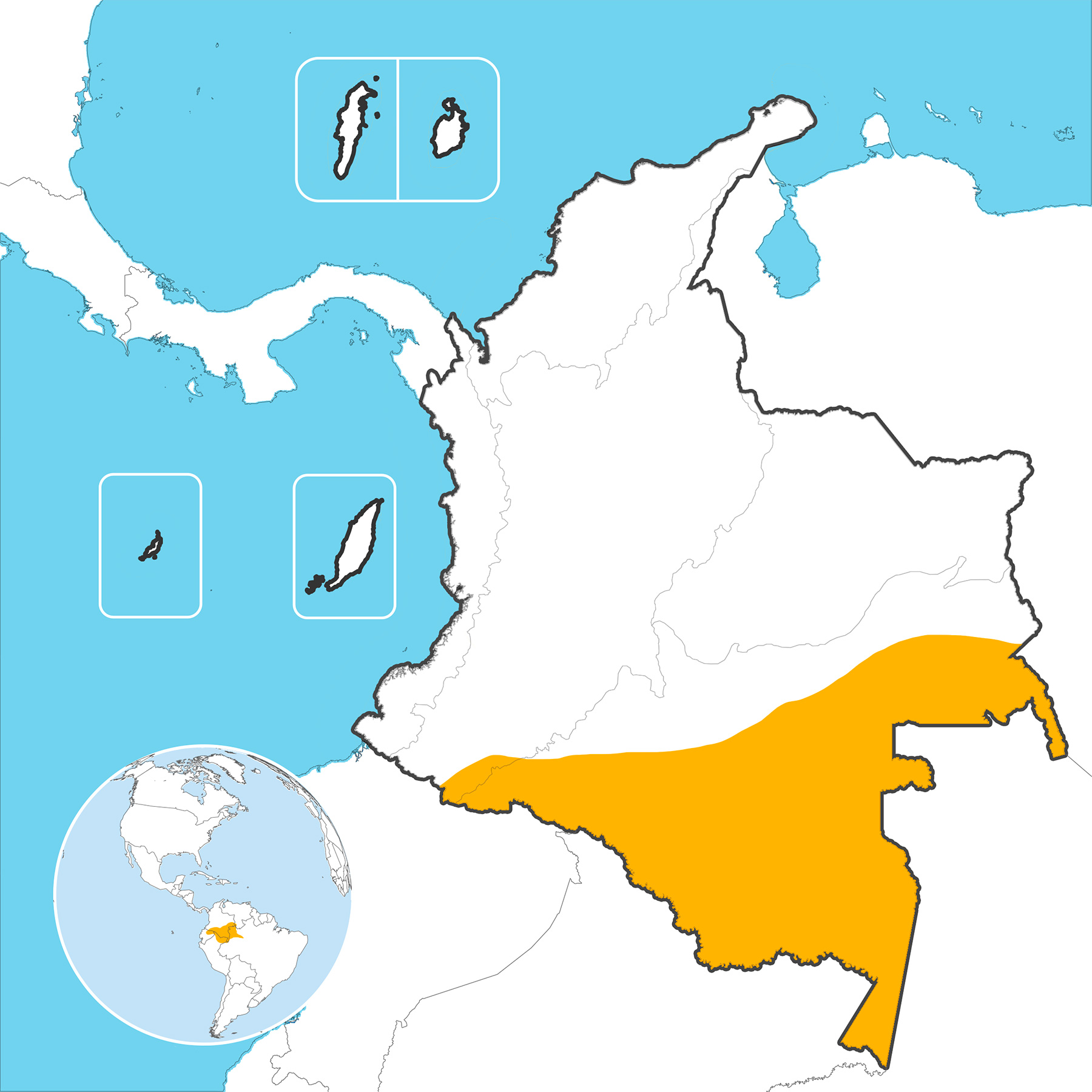
✎ Andrés Rodriguez

✎ Camilo Alméciga


Woolly Monkey
Lagothrix lagotrichaAmazon region
RECORRIDO VIRTUAL POR LA BIODIVERSIDAD DE COLOMBIA
Museo de Historia Natural
Universidad Nacional de Colombia

Woolly Monkey
Lagothrix lagotricha
Morpho-functionality
Tail
Its tail helps it stabilize, balance, and even grab objects
Toes
Its toes are highly developed and allows it to hold on to branches and logs.
Fur coat
Its dense coat helps it stay dry, as it works like a raincoat in the rain forests where it lives.
Lifecycle
The reproductive cycle lasts from twelve to 49 days, in which the heat lasts for three or four. The gestation period is 7.5 months with a single calf of about 140 g born between the end of the dry season and the middle of the wet season. Lactation of the baby goes from nine to twelve months. After their first offspring the females will give birth every two years. The baby will hold on to the abdomen of its mother during the first month and then it goes to the back. After the fifth month they become more independent. Sexual maturity is reached at six to eight years for females and after five years for males. Life expectancy for male woolly monkeys is 24 years and females 30 years.
Woolly Monkey
Distribution
They inhabit northern South America, including the upper Magdalena River valley in Colombia, much of the upper Amazon basin in Colombia, Ecuador, Peru, Bolivia, and Brazil to the west of the Black River, and the eastern foothills and slopes of the Andes reaching up to 3,000 m of altitude. It inhabits undisturbed, continuous and mature primary forests such as cloud forests, gallery forests , moriche palm swamps, flooded and non-flooded forests.
Distribution area






